
The Deobandi movement or Deobandism is a revivalist movement within Sunni Islam that adheres to the Hanafi school of law. It was formed in the late 19th century around the Darul Uloom Madrassa in Deoband, India, from which the name derives, by Muhammad Qasim Nanautavi, Rashid Ahmad Gangohi, Ashraf Ali Thanwi and Khalil Ahmad Saharanpuri after the Indian Rebellion of 1857–58. They opposed influence of non-Muslim cultures on the Muslims living in South Asia. The movement pioneered education in religious sciences through the Dars-i-Nizami associated with the Lucknow-based ulama of Firangi Mahal with the goal of preserving traditional Islamic teachings from the influx of modernist, secular ideas during British colonial rule. The Deobandi movement's Indian clerical wing, Jamiat Ulema-e-Hind, was founded in 1919 and played a major role in the Indian independence movement through its participation in the Pan-Islamist Khilafat movement and propagation of the doctrine of composite nationalism.
The Al-Azhar University is a public university in Cairo, Egypt. Associated with Al-Azhar Al-Sharif in Islamic Cairo, it is Egypt's oldest degree-granting university and is known as one of the most prestigious universities for Islamic learning. In addition to higher education, Al-Azhar oversees a national network of schools with approximately two million students. As of 1996, over 4,000 teaching institutes in Egypt were affiliated with the university.

Noble Drew Ali, possibly born as Timothy Drew or Thomas Drew,, was an American religious leader who, in the early 20th century, founded a series of organizations that he ultimately placed under the umbrella title, the Moorish Science Temple of America; including the Canaanite Temple (1913–1916), the Moorish Divine and National Movement (1916–1925), the Moorish Temple of Science (1925–1928), and the Moorish Science Temple of America. Considered a prophet by his followers, he founded the Canaanite Temple in 1913 while living in Newark, New Jersey. From there, he made his way westward and eventually settled in Chicago between 1922 and 1925. Upon reaching Chicago, his movement would gain thousands of converts under his instruction. Upon the murder of a rival Moorish Science Temple leader, Drew Ali was arrested and sent to jail; he died on July 20th, 1929, shortly after being released.

Turco-Egyptian Sudan, also known as Turkiyya or Turkish Sudan, describes the rule of the Eyalet and later Khedivate of Egypt over what is now Sudan and South Sudan. It lasted from 1820, when Muhammad Ali Pasha started his conquest of Sudan, to the fall of Khartoum in 1885 to Muhammad Ahmad, the self-proclaimed Mahdi.

The Al-Azhar Shia Fatwa, known in Arabic as The Shaltoot Fatwa, is an Islamic fatwa issued in 1959 on the topic of Shi'a–Sunni relations by Sunni scholar Shaikh Mahmood Shaltoot. Under Shaltut, Sunni-Shia ecumenical activities would reach their zenith.
Imam Mohamad Jawad Chirri was the founder and director of the Islamic Center of America until his death.

Sudanese Arabs are the inhabitants of Sudan who identify as Arabs and speak Arabic as their mother tongue. Some of them are descendants of Arabs who migrated to Sudan from the Arabian Peninsula, although the rest have been described as Arabized indigenous peoples of Sudan of mostly Nubian, Nilo-Saharan, and Cushitic ancestry who are culturally and linguistically Arab, with varying cases of admixture from Peninsular Arabs. This admixture is thought to derive mostly from the migration of Peninsular Arab tribes in the 12th century, who intermarried with the Nubians and other indigenous populations, as well as introducing Islam. The Sudanese Arabs were described as a "hybrid of Arab and indigenous blood", and the Arabic they spoke was reported as "a pure but archaic Arabic". Burckhardt noted that the Ja'alin of the Eastern Desert are exactly like the Bedouin of Eastern Arabia.

Muhammad Qasim Nanawtawi was an Indian Sunni Hanafi Maturidi Islamic Scholar, theologian and a Sufi who was one of the main founders of the Deobandi Movement, starting from the Darul Uloom Deoband.
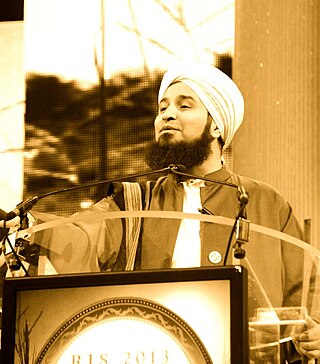
Habib Ali Zain Al-Abidin bin Abdul Rahman Al-Jifri is a Yemeni Sufi Islamic scholar and spiritual educator based in the United Arab Emirates. He is the founder of Tabah Foundation, a research institute based in Abu Dhabi, UAE. He is a direct descendant of the Islamic Prophet Muhammad.

Ahmed Mohamed Ahmed El-Tayeb is an Egyptian Islamic scholar and the current Grand Imam of al-Azhar, Al-Azhar Al Sharif and former president of al-Azhar University. He was appointed by the Egyptian President, Hosni Mubarak, following the death of Mohamed Sayed Tantawy in 2010. He is from Kurna, Luxor Governorate in Upper Egypt, and he belongs to a Sunni Muslim family.
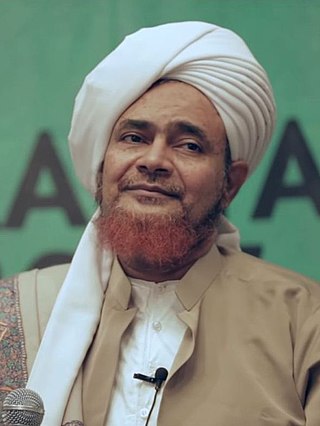
Habib Umar bin Hafiz is a Yemeni Sunni and Sufi Islamic scholar, teacher, and founder and dean of Dar al-Mustafa Islamic seminary. He also a member of the Supreme Advisory Council for the Tabah Foundation in Abu Dhabi.
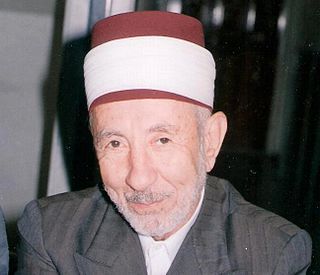
Muhammad Said Ramadan Al-Bouti was a renowned Syrian Sunni Muslim scholar, writer and professor, where he was vice dean in the Damascus University and served as the imam of the Umayyad Mosque.
African-American Muslims, also known as Black Muslims, are an African-American religious minority. African-American Muslims account for over 20% of American Muslims. They represent one of the larger Muslim populations of the United States as there is no ethnic group that makes up the majority of American Muslims. They mostly belong to the Sunni sect, but smaller Shia and Nation of Islam minorities also exist. The history of African-American Muslims is related to African-American history in general, and goes back to the Revolutionary and Antebellum eras.
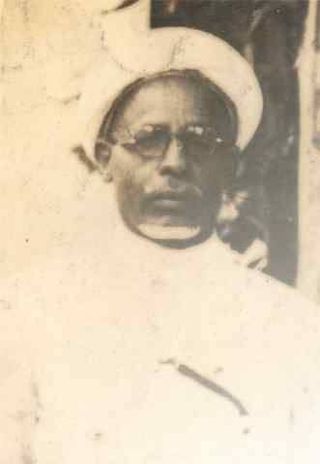
Ahmad Surkati was the founder of the organization Jam'iyat al-Islah wa Al-Irsyad al-Arabiyah, which later transformed into Jam'iyat al-Islah wal Irsyad al-Islamiyyah, which is more commonly called as al-Irshad in Batavia, August 1915. Many historians acknowledge al-Irshad role in the reformation of Islamic thought in Indonesia, but unfortunately his name is not mentioned in the discourse of Islamic thought in Indonesia.
Gibril Fouad Haddad is a Lebanese-born Islamic scholar, hadith expert (muhaddith), author, and translator of classical Islamic texts. He was featured in the inaugural list of The 500 Most Influential Muslims and has been called "one of the clearest voices of traditional Islam in the Western world", a "prominent orthodox Sunni" and a "staunch defender of the traditional Islamic schools of law." He holds ijazas from over 150 scholars across the Muslim world. He was a visiting fellow (2013-2015) then senior assistant professor (2015-2018) at the Sultan Omar Ali Saifuddin Center for Islamic Studies, Universiti Brunei Darussalam. He is also a staunch critic of Wahhabism and Salafism.
The 2016 conference on Sunni Islam in Grozny was convened to define the term "Ahl al-Sunnah wa al-Jama'ah", i.e. who are "the people of Sunnah and majority Muslim community", and oppose Takfiri groups. The conference was held in the Chechen Republic capital of Grozny from 25 to 27 August 2016, sponsored by the president of Chechnya, Ramzan Kadyrov, and attended by approximately 200 Muslim scholars from 30 countries, especially from Russia, Egypt, Syria, Libya, Kuwait, Sudan, Jordan, etc.
The Arabic title nāẓir refers to an overseer in a general sense. In Islam, it is the normal term for the administrator of a waqf. The office or territory of a nāẓir is a nazirate.
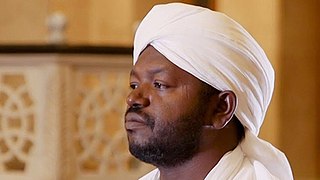
Noreen Mohammad Siddiq was a Sudanese imam who was known for his recitations of the Quran. He was an imam of the Khartoum Grand Mosque, the Sayeda Sanhori Mosque, the Al-Nour Mosque, and other famous mosques within the capital city of Sudan, Khartoum.

Islam is the third most widely professed religion in New York City, after Christianity and Judaism. A 2018 study estimated that there are over 750,000 Muslims living in New York City, the largest population of Muslims by city in the United States. Approximately 9% of New York City residents are Muslim, constituting 22.3% of American Muslims, with 1.5 million Muslims in the greater New York metropolitan area, representing the largest metropolitan Muslim population in the Americas.—and the most ethnically diverse Muslim population of any city in the world.

Abd al-Majid Sultan Kigab, also known as Sultan Kigab, is a former Sudanese-Canadian marathon swimmer and presidential candidate.


















